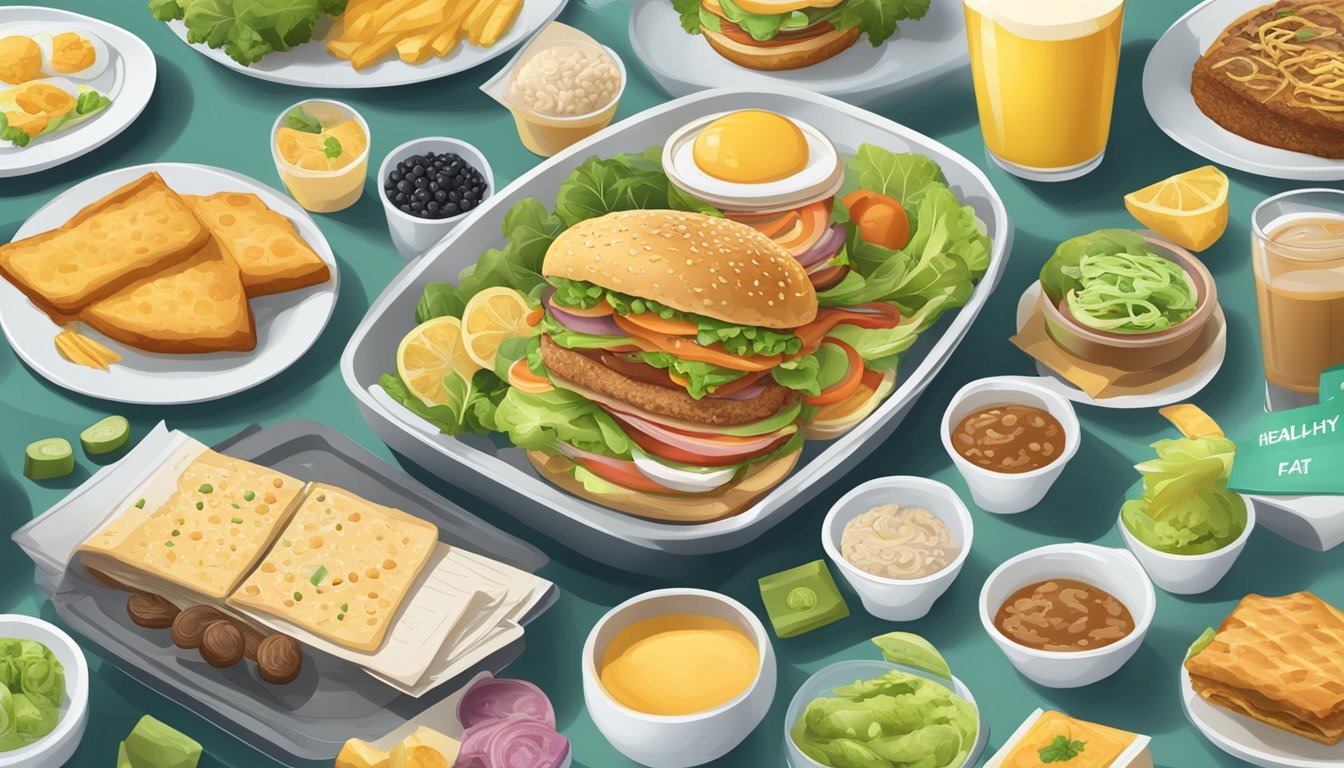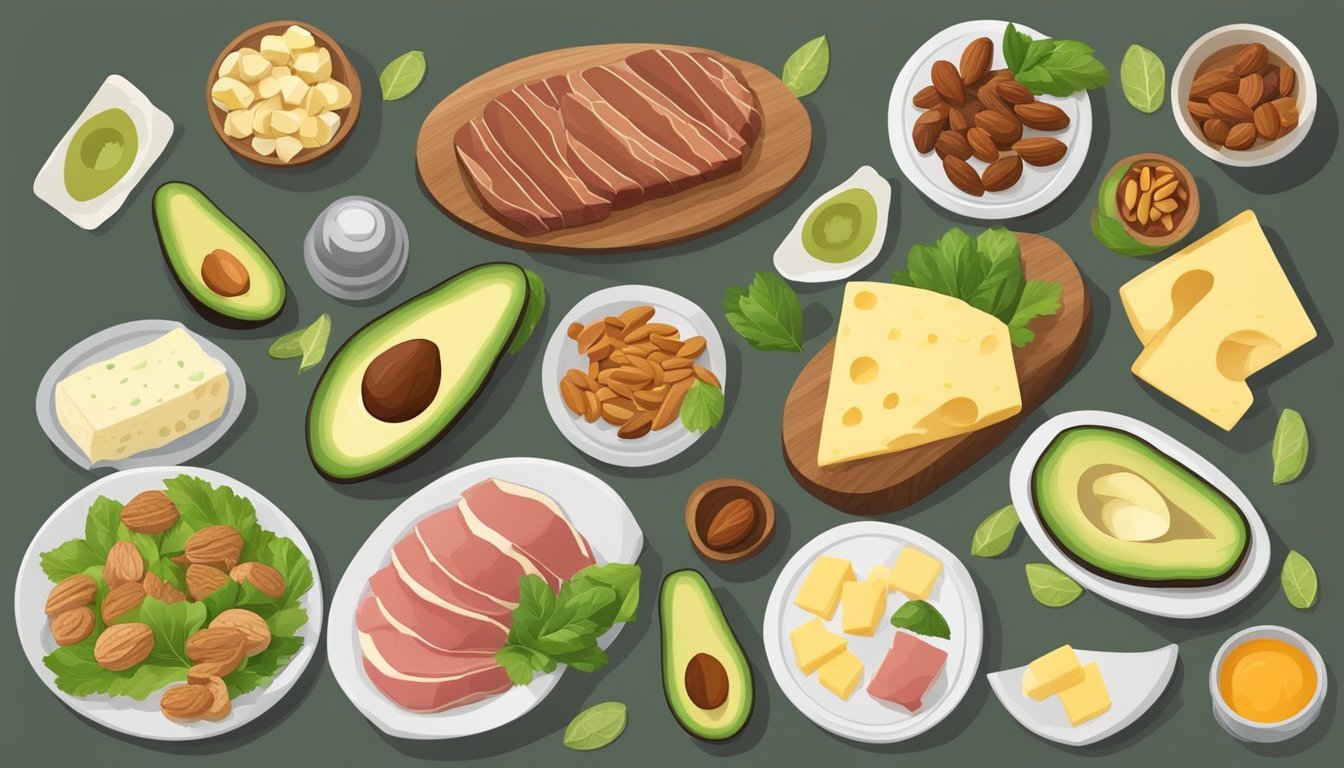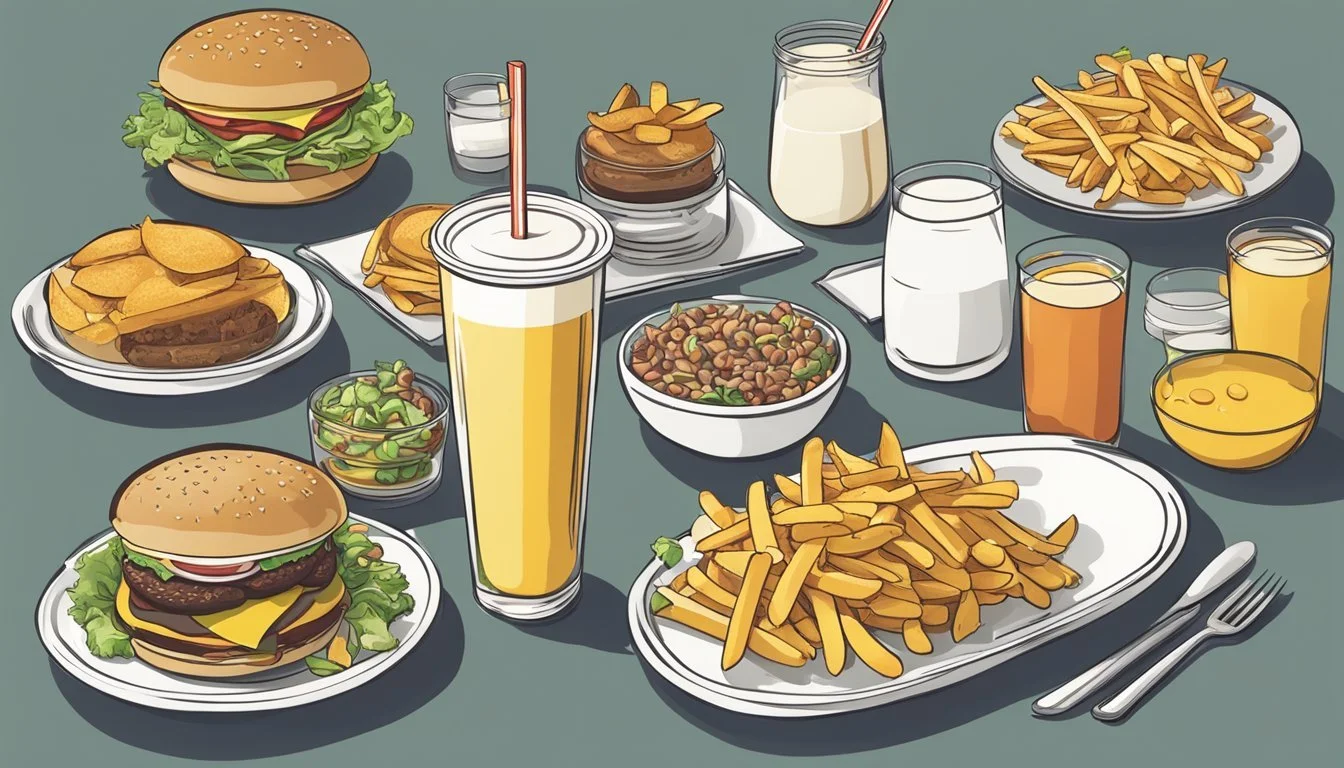High-Fat Diet Strategies: Navigating Restaurant Menus Successfully
Adjusting to a high-fat diet, such as the ketogenic diet, requires careful planning and smart choices, especially when dining out. Restaurants often cater to a range of dietary preferences, but finding options that align with a high-fat, low-carbohydrate regimen can be a challenge. The cornerstone of a high-fat diet is the strategic selection of nutrient-dense foods that promote satiety and support the body's metabolic shift from using glucose to fats as the primary source of energy.
While eating out, individuals following a high-fat diet should be mindful of hidden carbs and sugars that can disrupt their nutritional goals. They can benefit from tactics such as reviewing menus ahead of time, opting for meals rich in healthy fats like avocados, cheese, nuts, and seeds, and choosing grilled, baked, or steamed dishes (What wine goes well with steamed dishes?) over those that are breaded or fried. Being clear with servers about dietary preferences helps ensure meals are prepared according to one's health objectives.
It's essential for those on a high-fat diet to look for establishments that offer customizable meal options and to communicate specific dietary needs to restaurant staff. Selecting the right kinds of fats—prioritizing monounsaturated and polyunsaturated fats over trans fats and certain saturated fats—is also important for maintaining a healthy balance. With a little foresight and knowledge, diners can navigate menus and enjoy eating out without compromising the principles of their high-fat eating plan.
Understanding High-Fat Diets
In exploring high-fat diets, it is important to consider the scientific basis for dietary fat, the variety of high-fat diets, and their benefits and risks for health and weight management.
Scientific Overview of Fat in Diets
Fat is a macronutrient essential for the body, serving various functions, including nutrient absorption and hormone production. Dietary fat is broken down into fatty acids, some of which the body can synthesize, while others, known as essential fatty acids, must be obtained from food.
Types of High-Fat Diets
There are several high-fat diet types, each with its guidelines. The Ketogenic diet focuses on extremely low carbohydrates, moderate protein, and high fat. The Mediterranean diet emphasizes healthy fats from olive oil and fish. The Atkins diet starts with a low-carbohydrate phase, gradually adding carbs back in.
Health Implications
High-fat diets can impact health differently. Diets rich in saturated fats may increase the risk of heart disease, whereas those rich in unsaturated fats, including monounsaturated and polyunsaturated fats, can be heart-healthy. The balance of fats is crucial, and individual responses can vary.
High-Fat Diets and Weight Management
Weight loss on high-fat diets, particularly ketogenic, often results from reduced calorie intake and altered metabolism. However, weight management should align with personal health needs and consider risks such as the potential for nutrient deficiencies.
Balancing Nutrients
Balancing fat with other nutrients like fiber, protein, and carbohydrates is vital. High-fat diets should not exclude essential nutrients, and the emphasis should be on healthy fats, while limiting intake of trans and saturated fats.
Strategies for Adherence
Adherence to a high-fat diet involves careful meal planning and being mindful of fat types and sources. Incorporating a variety of fats, understanding personal dietary needs, and creating sustainable eating patterns promote long-term adherence.
Comparing High-Fat and Low-Fat Approaches
High-fat and low-fat diets differ in their approach to managing calorie intake and metabolism. Low-fat diets often focus on reducing calorie intake by cutting down on fat, which is calorie-dense, while high-fat diets reduce carbohydrates and sometimes overall calorie intake.
Navigating Dietary Restrictions
Those following high-fat diets with dietary restrictions, such as vegan, dairy-free, or gluten-free needs, must plan to ensure all nutrients, vitamins, and minerals are adequately met. This can involve using specific substitutions and careful attention to allergies or intolerances.
Eating Out on a High-Fat Diet
Adopting a high-fat diet involves strategic choices, especially when eating out, to ensure meals align with dietary goals. The following subsections guide diners on how to navigate menus, prioritize healthy fats, control portions, and communicate effectively with restaurant staff.
Menu Navigation and Meal Choices
When reviewing a menu, prioritize dishes rich in protein and vegetables, which can help balance the meal's macronutrient profile. Look for keywords such as "grilled" or "steamed," which often indicate lower amounts of added fats and sugars.
Selecting Healthy Fats
Choose meals that include sources of healthy fats, such as avocados, nuts, seeds, and fish high in omega-3 fatty acids. Replace saturated and trans fats with these healthier options when possible.
Portion Control and Caloric Intake
Be mindful of portion sizes to manage caloric intake effectively. A high-fat meal can quickly exceed daily calorie requirements, compromising weight management goals.
High-Fat Foods to Avoid
Avoid dishes with high levels of saturated fats, trans fats, and added sugars. Excessive consumption of these can negate the benefits of a high-fat diet.
Choosing the Right Restaurants
Select restaurants that offer a variety of meals suitable for a high-fat diet. Some restaurants may provide nutritional information, which can be helpful for meal planning.
Making Special Requests
Don't hesitate to ask for modifications to dishes, such as substituting sauces or dairy products with healthier fat options. Special requests can tailor a meal to better fit a high-fat diet.
Mindful Drinking
Choose beverages that complement a high-fat diet, such as water or unsweetened tea. Alcoholic drinks should be consumed in moderation due to their caloric content and potential to disrupt meal balance.
Customization Strategies
Customize orders by adding veggies, beans, and additional protein to increase the nutrient density of your meal. Most restaurants are willing to accommodate such requests, enhancing your dining experience while adhering to your diet.
Nutritional Considerations When Eating Out
When choosing high-fat dishes while dining out, a diner should prioritize achieving a balance of macronutrients and micronutrients to maintain a healthy diet.
Macro and Micronutrient Balance
It's crucial for individuals to seek a balance of macronutrients—proteins, fats, and carbohydrates—to ensure their meals are nutritionally complete. High-fat meals can be balanced with lean proteins and fiber-rich carbohydrates such as vegetables and whole grains. Micronutrients like vitamins and minerals should not be overlooked; options like salads provide a nutrient-dense choice without compromising on fat levels.
Hydration and High-Fat Diets
A high-fat diet can increase the body's need for water, making hydration a key factor. Diners should drink ample water to support digestion and maintain optimal blood pressure levels. Consuming beverages without added sugar, such as water or unsweetened tea, can complement a high-fat meal effectively.
Incorporating Diverse Food Groups
Diversity in food groups is essential for a well-rounded diet. Vegetables and fruits should be included for their high fiber and essential nutrients. One should not neglect whole grains and dairy (or dairy alternatives), even when focusing on a high-fat diet, to ensure they receive comprehensive nutrition.
Special Diets and Nutrient Density
People following vegan, low-carb, or Mediterranean diets should focus on the nutrient density of their choices. A Mediterranean diet emphasizes healthy fats and includes a variety of food groups. Vegan patrons can opt for plant-based fats from sources like avocados or nuts, while those on low-carb or high-protein diets should select dishes with ample proteins and healthy fats without compromising their dietary needs.
Common Pitfalls and How to Avoid Them
Navigating a high-fat diet while dining out can be challenging. Patrons should be vigilant about hidden fats and sugars, portion sizes, and social influences that might derail their dietary goals.
Identifying Hidden Fats and Sugars
Restaurants often incorporate more added fats and sugars into dishes than one might expect, making meals more calorie-dense. To avoid these hidden calories, patrons should inquire about the preparation of dishes and opt for grilled or steamed options over fried or sautéed ones. It’s also wise to ask for dressings and sauces on the side to control intake.
Avoiding Overconsumption
Portion control is crucial for managing calorie intake, especially when it comes to high-fat foods. Diners are encouraged to share entrees, order from the appetizer menu, or request a box early to save part of the meal for later. Sticking to one's dietary plan requires determination and the ability to resist finishing oversized portions.
Making Wise Dessert Choices
Desserts can be a minefield of sugars, including high levels of added sugars, and fats. Those following a high-fat diet should favor cheeses, nuts, or berries, which offer natural sugars and beneficial nutrients instead of cakes or pastries that often contain saturated and trans fats.
Resisting Peer Pressure
A key aspect of adherence to a diet is the ability to make individual choices despite what others are doing. One should be prepared to politely decline food that doesn't align with their eating plan and suggest restaurants with healthier options that support their mindful eating efforts. Social occasions don't have to equate to unhealthy choices.
Resources for High-Fat Diet Followers
For followers of a high-fat diet, maintaining adherence and ensuring proper nutrient balance can be complex. Fortunately, a range of resources is available to assist with meal planning, calorie intake tracking, and staying informed on dietary guidelines.
Apps and Tech for Diet Tracking
MyKeto: A user-friendly mobile app specifically designed for ketogenic and other high-fat diet followers. It provides a platform for monitoring calorie intake and tracking progress.
FatSecret: Offers comprehensive tools for recording meals and exercises, complete with a supportive community for additional motivation and support.
Support Groups and Communities
KetoDiet Support Group: A large online community where individuals can find support and share experiences related to the high-fat diet.
Local Meetup Groups: In many cities, local communities gather to share meals and tips on adhering to high-fat dietary guidelines through services like Meetup.com.
Educational Materials and Guidelines
The Art and Science of Low Carbohydrate Living: A book that serves as a reference for scientifically-backed information on high-fat diets.
Dietary Guidelines: Official guidelines provided by health organizations, such as the Dietary Approaches to Stop Hypertension (DASH), can be adapted to align with a high-fat diet approach, considering the balance of nutrients carefully.
Conclusion
Adopting a mindful approach to dining out can enable individuals to enjoy restaurant meals without straying from a healthy eating plan, even when a high-fat diet is a concern. They should prioritize dishes with nutrient-rich fats, such as avocados, nuts, and olive oil, over meals with an abundance of saturated and trans fats.
One should consider the following strategies:
Plan ahead by previewing menus online and decide on a balanced meal that aligns with their dietary goals.
Balance their plate by adding leafy greens or steamed vegetables to incorporate fiber and micronutrients.
Request modifications where necessary, such as asking for dressings or sauces on the side to control fat intake.
When in a restaurant, it is beneficial for patrons to engage in sensory eating. This includes:
Taking the time to savor the aroma and flavor of the food.
Eating slowly to recognize satiety cues, thereby avoiding overconsumption.
In conclusion, individuals can successfully navigate a high-fat diet while eating out by making informed choices and eating attentively. They should focus on moderation and the nutritional quality of fats, coupled with a balanced intake of other macronutrients. This tactful approach supports the pursuit of health objectives and the enjoyment of social dining experiences.
Appendices
This section provides additional resources and information to deepen the reader's understanding of the impacts of a high-fat diet and how to navigate eating out. It includes a glossary, answers to common questions, and references for further exploration.
Glossary of Terms
High-Fat Diet: A diet that contains a higher proportion of fats in comparison to carbohydrates and proteins. Typically involves consuming more than 35% of total daily calories from fats.
Nutrients: Substances needed for growth, metabolism, and for other body functions.
Dietary Guidelines: A set of recommendations about daily eating and physical activity for all Americans, which emphasize the consumption of nutrient-dense foods and beverages.
Frequently Asked Questions
What is considered a high-fat diet when eating out?
A high-fat diet, in the context of dining out, typically refers to menu items rich in fats, such as fried foods (What wine goes well with fried foods?), creamy sauces (What wine goes well with creamy sauces?), and dishes with a substantial amount of cheese or oil.
Are there any benefits to a high-fat diet?
While a high-fat diet is often flagged for potential health risks, some research indicates potential benefits for certain individuals under specific conditions, such as improved satiety and in some cases, better management of conditions like epilepsy. However, balance and adherence to dietary guidelines are critical.
Can someone stick to dietary guidelines while following a high-fat diet?
Yes, it's possible to follow dietary guidelines on a high-fat diet by choosing healthful fat sources, controlling portion sizes, and ensuring a balanced intake of all macronutrients.
References and Further Reading
Scientific Journals: Readers seeking detailed science-based evidence can consult peer-reviewed journals for studies on the impact of high-fat diets on health.
Dietary Guidelines: The official Dietary Guidelines for Americans provide a framework for nutrition and can be found on the website of the United States Department of Agriculture (USDA).
Nutritional Science Texts: For an in-depth look at nutrients and diets, authoritative texts in nutritional science offer comprehensive insights.







